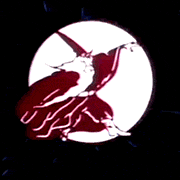|
I'll admit I don't know everything about broad axes, but is that one really a broad axe? As is my understanding a broad axe has a side thats flat, for using to square off logs. Also, the blade is a lot.... Broader if you will Like this one: https://www.kijiji.ca/v-art-collectibles/city-of-toronto/19th-century-vintage-wooden-handle-broad-axe/1559547776
|
|
|
|

|
| # ? May 28, 2024 09:53 |
|
It doesn't have to be that broad. Here's one as an example: https://www.gransforsbruk.com/en/product/gransfors-broad-axe-model-1900/ The main thing is that it's designed more for splitting cross grain vs along the grain. The blade is thinner and not wedge profiled (or very lightly wedged) and it's a longer cutting surface. When I initially said a felling axe and splitting axe, that's because a felling axe shares some of that geometry. Edit: As to that rag trick, it looks like it would work fine. I've sharpened a few axes with just a file and not had an issue. So I imagine that if you want a convex edge grind that trick would work. It'll take longer though, because you can't take long strokes with the file. armorer fucked around with this message at 02:26 on May 10, 2021 |
|
|
|
Yeah that broad-ish axe is fuckin weird. Every single one of those that I've ever seen has had the offset to one side for cleaning up the side of a log.
|
|
|
|
Looks like a roofer’s hatchet, to me.
|
|
|
|
Slung Blade posted:Yeah that broad-ish axe is fuckin weird. Every single one of those that I've ever seen has had the offset to one side for cleaning up the side of a log. That's the weird part. Centered is the normal way to me. That looks like a small hewing axe to me, sorta like a gränsfors 1900 but smaller. AmbassadorofSodomy posted:I'll admit I don't know everything about broad axes, but is that one really a broad axe? No that's just your local tradition. Scandi hewing axes for instance are mostly double bevel. Here's the finnish hewing axe I am working on now:    Instead of having a flat side, you tilt the axe, it's just a matter of skill, but in return you get a more versatile tool. His Divine Shadow fucked around with this message at 04:35 on May 10, 2021 |
|
|
|
So the straight handled one is for felling and the curved handle is for splitting, thank you everyone. I'll free them from their handles and clean them up a bit this week.
|
|
|
|
Doesn't look like a felling axe to me. A felling axe would have a longer shaft and generally don't have that look or profile to them. A hewing axe is what I think, or some other sort of carpentry application, but not felling. Looks like it's meant to cut along the grain, not across it. The other one looks like a generic axe for splitting and perhaps all-round use.
|
|
|
|
His Divine Shadow posted:That's the weird part. Centered is the normal way to me. That looks like a small hewing axe to me, sorta like a gränsfors 1900 but smaller. I totally get what you're saying, and I can see what you mean. Axe stuff always results in friendly discussion, there are a lot of ways to skin this particular cat, as it were.
|
|
|
|
Slung Blade posted:I totally get what you're saying, and I can see what you mean.
|
|
|
|
threelemmings posted:
Depends on the cat, dunnit.
|
|
|
|
I don't have excess cats, I'll sharpen for wood this time round.
|
|
|
|
Hey thread, I have a question that I'm hoping is appropriate here. I've got some 1/8in x 3/4in aluminum flats that I'm trying to make into a bracket. At first, I thought I could just bend the stuff appropriately in a vise and be done, but it seems doing sharp corners will cause cracking and metal fatigue. Originally, I was going for a standard [ shaped bracket, but a ( shape would also work for my purposes. What's the best way to get a smooth and even curve though? I'm guessing something like "make a jig of the curve size you want, bend the flat around that till it fits"? Or is there a different way I should be doing this?
|
|
|
|
If it's anything like dealing with hammering on aluminum bodywork it needs to be annealed before you can bend it. The trick I learned for that is to run an acetylene torch on it burning dirty to soot up the area to be annealed, then switch to a clean burn and stop when you've burnt the soot off. I'm sure there are much more correct ways to do this but that's worked for me.
|
|
|
|
I mean, I'm not looking for a particularly small bend. The total end-to-end length of the bracket is going to be 4.5 inches, while the total depth of the bracket will be 3.875 inches. The piece I was working with seemed to bend just fine till I tried to pound the curve into a corner, at which point it broke. Shouldn't I be able to bend the flats around a gentler curve without too much loss of integrity, or is the heating strictly necessary?
|
|
|
|
You can cold-work aluminum to a limited extent, but how well it will take it depends on the alloy and you're always fatiguing the metal somewhat. Motronic's annealing suggestion is a good one no matter how far you're bending it. Aluminum just doesn't really like being worked cold. The proper way to form a flat sheet or bar into a smooth circular profile is with a roller. There are videos about building one yourself, if you wanna be that extra. https://www.youtube.com/watch?v=uXrrdHIR2w4 Given that it's a subtle curve you can probably also just hammer it into shape over a big steel tube or something.
|
|
|
|
Motronic posted:If it's anything like dealing with hammering on aluminum bodywork it needs to be annealed before you can bend it. The trick I learned for that is to run an acetylene torch on it burning dirty to soot up the area to be annealed, then switch to a clean burn and stop when you've burnt the soot off. +1 this works great. Strait acetylene till it's black then with o2 to remove would be how I would describe it. You can and may need to do this multiple times depending on how much you're working the aluminum. You can feel it go from easy to hard.
|
|
|
|
An even better (and more easily-available) indicator than the acetylene carbon black trick is: ivory bar soap! boring ol cheap soap is best, no colours or fragrances. Get a stick of it and rub lines across the area to be annealed, spaced an inch or two apart. Heat the metal (from the backside if possible) with the torch, and when the soap turns black, the metal is annealed and you should move the heat away immediately. Once all Soap Indication has turned black, the entire piece should be quenched in water promptly- the quicker it is cooled the softer it will end up, but air-cooling is fine for thin/sheet metal parts that will cool rapidly regardless. I've tried soap and soot while annealing a whole lot of aluminum, and I'm a passionate Soap Man through and through.
|
|
|
|
Oh that's awesome. I need to try this next time. (although for bodywork most time I have no real way to quench other than a garden hose)
|
|
|
|
Terry English the armourer uses a sharpie - when it’s heated to the right temp the sharpie ink disappears.
|
|
|
|
I want to up my welding game so I'm trying to come up with some questions that might, or might not, help me improve my skillz. If I'm welding something, anything really is it better to keep the ground clamp as close to where I'm welding as possible, or does it not matter as long as the connection is good?
|
|
|
|
AmbassadorofSodomy posted:I want to up my welding game so I'm trying to come up with some questions that might, or might not, help me improve my skillz. I have not really noticed any difference whether my ground clamp is 2" or 12' from the weld point. This assumes a solid connection to the workpiece and that the cross sectional area of the workpiece is sufficiently large. A 1/2" diameter steel bar has roughly the same resistance as a 00 copper cable. As long as your cross sectional area is above that you are good to go. If you would be fine welding with a longer ground lead, the distance between the weld and the clamp is from the same thing. I have done tig, mig, and stick and none of those processes seem to have any noticeable difference. Now if you are dealing with thin metal then you would want to get the ground clamp close to the weld. Also, for welding on things like cars you want to get the ground close to the weld to minimize the current loop. If you ground on one end of the car and weld on the other, you may blow up some of the electronics as they could see significant stray voltages.
|
|
|
|
loving lol Finally  After a wire brushing, first go at sharpening and a rub with oil  Any recommendations on where to get new handles in the UK?
|
|
|
|
Motronic posted:Oh that's awesome. I need to try this next time. quenching sheet parts can be an enormous pain in the rear end even when they're sitting free and loose on your welding table, it's remarkably hard to get a hold of big wide quench-suitable tubs that aren't made of melty plastic nowadays; that's more or less how i've done it past a certain part size awkwardness threshold. fortunately you can usually get away without quenching sheet b/c it cools in air so quickly, although I always needed a deep and very soft anneal, done frequently, for traditional repousse work on modern aluminium sheet alloys, which are much springier than is desirable for that sort of thing one time when I was working a weeklong job with a couple of other smiths, we needed to anneal this bigass thick aluminium plate that had to stay fixtured in several post vises as part of a much larger fabrication; using a hose would have soaked the shop unacceptably, and just splashing/daubing water on wasn't cutting it, so during lunch i bought a few bigass powerade sport-top bottles, refilled them with water, and got two guys (wearing full leathers to manage the incredible radiant heat a big red-hot plate puts off) to run the Mobile Quench from one end to the other, steadily spraying down the plate in lazy figure-eights that sprayed up all kinds of steam, and keeping pace with one another on either side of the hot plate to prevent it from warping  you feel good when it works out fine, but also you say "lets never do that again ok" Ambrose Burnside fucked around with this message at 22:49 on May 13, 2021 |
|
|
|
cakesmith handyman posted:Any recommendations on where to get new handles in the UK? Buy a sawn plank and start shaping. Nothing like a handle you made yourself.
|
|
|
|
Even better, get ahold of a sapling or branch that is an appropriate thickness (and has dried and is a good wood species) and start shaping. Nothing stronger than a handle that has complete uninterrupted grain running the full length.
|
|
|
|
Okay I'm up for that, looks like ash is traditional for a short handle in the UK and I can recognise that easily enough.
|
|
|
|
cakesmith handyman posted:Okay I'm up for that, looks like ash is traditional for a short handle in the UK and I can recognise that easily enough. You still have those there? Almost all of mine are dead from emerald ash borer. I am not happy about this. Struggling to treat the remaining ones and keep them alive.
|
|
|
|
Motronic posted:You still have those there? loving. SAME.
|
|
|
|
Ghostnuke posted:loving. SAME. I feel like I'm losing...... 
|
|
|
|
cakesmith handyman posted:Okay I'm up for that, looks like ash is traditional for a short handle in the UK and I can recognise that easily enough. Rowan is another traditional material
|
|
|
|
cakesmith handyman posted:Okay I'm up for that, looks like ash is traditional for a short handle in the UK and I can recognise that easily enough. Silly Europeans put the mountains on their continent sideways and lost all their hickories in the ice age and have to make do with ash for axe handles 
|
|
|
|
Birch is what I like, granted it requires a collared axe to compensate for it being weaker. But it has the least rebounding of vibrations back into your hands, whereas hickory is probably the worst on that score, so it feels real nice to use. Also hickory becomes brittle in real cold temps whereas birch handles that fine.
|
|
|
 Any of you european folks recognize this collet? It has an M20X1 thread on the back. OAL is 140 mm. It's similar to some Deckel collets, but I can't seem to figure out what the hell it is. It's for a grinder made in the UK, and could totally be 100% custom, but maybe it's not?
|
|
|
|
|
Looks like a collet for a SAM center. Those could be thru coolant holes on the face to ensure everything is nice and lubricated while the machines rubs parts into conformance.
|
|
|
Samuel L. Hacksaw posted:Looks like a collet for a SAM center. Those could be thru coolant holes on the face to ensure everything is nice and lubricated while the machines rubs parts into conformance. My bad, should have rotated it more, those are all blind holes that fit a collet wrench.
|
|
|
|
|
I should be able to cut hardened M2 drill rod on my normal abrasive cutoff saw or with a cutoff wheel in the grinder, right? It’s only 1/4” and 3/8”.
|
|
|
|
Yes. Just watch the heat.
|
|
|
|
|
If you want to keep the hardness, you'll have to take very small bites with breaks to cool the piece. Even then you'll lose the temper in the area immediately adjacent to the cut. If you're going to re-harden the piece and you just want to know "can it cut" then yeah absolutely, a cutoff wheel on a grinder will go through anything ferrous. It will cut
|
|
|
|
crosspost from 3d printing thread: i'm using a specialized high-temperature resin to produce casting molds for low-melt eutectic alloys with various tooling applications. here's a test mold, a vector trace of a genghis-era mongolian diplomat's 'passport'  this is obviously not a great casting, the lettering is sunken/missing because of a printing issue with this particular mold + the pour was cold + interrupted, but I can tell the metal captures whatever detail is there with incredible fidelity. this particular alloy (60/40 tin/bismuth) is dimensionally-stable over time, unlike almost all other low-melt alloys which shrink or contract post-casting (or both!). this makes it ideal as a melt-out mandrel material for various processes (lost-'wax' casting, electroforming, etc) Ambrose Burnside fucked around with this message at 18:51 on May 25, 2021 |
|
|
|

|
| # ? May 28, 2024 09:53 |
|
Ambrose Burnside posted:crosspost from 3d printing thread: i'm using a specialized high-temperature resin to produce casting molds for low-melt eutectic alloys with various tooling applications. here's a test mold, a vector trace of a genghis-era mongolian diplomat's 'passport' Absolutely bitchin
|
|
|





























